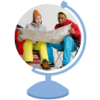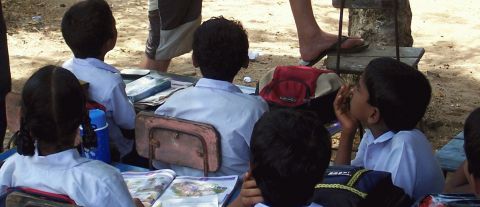Study guide with Introduction to Health Psychology
Online summaries and study assistance with the 5th edition of Introduction to Health Psychology by Morrison & Bennett
- For Booksummaries with Introduction to Health Psychology by Morrison & Bennet, see Summaries per chapter with the 5th edition
- For summaries, bulletpoints, practice exams and glossaries with earlier editions of Introduction to Health Psychology by Morrison and Bennett, see Study guide with Introduction to Health Psychology by Morrison and Bennett
Related content on joho.org
Meer lezen over studie, stage en samenvattingen
Gerelateerde pagina's
Gezondheidspsychologie en klinische psychologie studeren en stage in het buitenland
Psycholoog en coach in het buitenland via betaald werk, stage of vrijwilligerswerk
Studeren in het buitenland verzekeren
Therapeutische vaardigheden: leren of versterken
Relaties en meer lezen
JoHo: crossroads via de bundel
- Samenvatting van Abnormal Psychology van Butcher e.a.
- Samenvatting van Abnormal Psychology van Nolen-Hoeksema
- Samenvatting van Abnormal Psychology: An Integrative Approach van Barlow & Durand
- Samenvatting van Addictions van Teesson
- Samenvatting van Behavior modification: What it is and how to do it van Martin & Pear
- Samenvatting van Capita Selecta in Clinical Psychology van Wessel and Aan het Rot
- Samenvatting van Cognitieve Therapie: de Basisvaardigheden van Ten Broeke e.a.
- Samenvatting van Depression van Hammen & Watkins
- Samenvatting van Essential Psychotherapies: Theory and Practice van Messer & Gurman
- Samenvatting van Fundamentals of Abnormal Psychology van Comer
- Samenvatting van Gezondheidsvoorlichting en gedragsverandering: een planmatige aanpak van Brug et al.
- Samenvatting van Handboek klinische ontwikkelingspsychologie van Prins and Braet
- Samenvatting van Handboek Persoonlijkheidspathologie van Eurelings-Bontekoe
- Samenvatting van Handboek Verslaving van Franken & Van den Brink
- Samenvatting van Health Psychology van Taylor
- Samenvatting van Hoe voorkom je ADHD? Door de diagnose niet te stellen van Batstra
- Samenvatting van Handboek posttraumatische stressstoornissen van Vermetten
- Samenvatting van Introduction to Health Psychology van Morrison and Bennett
- Samenvatting van Introduction to Personality, Clinical and Health Psychology van Custom edition UL
- Samenvatting van Psychologische diagnostiek in de gezondheidszorg van Luteijn & Barelds
- Samenvatting van Psychopathology (RUG) van Davey
- Samenvatting van Survival Psychology van Leach
- Samenvatting van The Handbook of Intellectual Disability and Clinical Psychology Practice van Carr e.a.
- Samenvatting van Why Zebras Don’t Get Ulcers: The Acclaimed Guide to Stress, Stress-Related Diseases, and Coping van Sapolsky
- Gedragstherapie en psychotherapie: uitgelichte boeksamenvattingen
- Orthopedagogiek en klinische pedagogiek: uitgelichte boeksamenvattingen
- Psychologische gespreksvoering en psychodiagnostiek: uitgelichte boeksamenvattingen
- Psychologie en Gedragswetenschappen: uitgelichte boeksamenvattingen
Gezondheidspsychologie en klinische psychologie studeren en stage in het buitenland
Activiteiten in buitenland
Nieuws
Partners: met impact
JoHo WorldSupporter: crossroads
JoHo: crossroads in spotlight
- 1 van 4
- volgende ›
Chapters
Teksten & Informatie
JoHo: paginawijzer
JoHo 'chapter 'pagina
Wat vind je op een JoHo 'chapter' pagina?
- JoHo chapters zijn tekstblokken en hoofdstukken rond een specifieke vraag of een deelonderwerp
Crossroad: volgen
- Via een beperkt aantal geselecteerde webpagina's kan je verder reizen op de JoHo website
Crossroad: kiezen
- Via alle aan het chapter verbonden webpagina's kan je verder lezen in een volgend hoofdstuk of tekstonderdeel.
Footprints: bewaren
- Je kunt deze pagina bewaren in je persoonlijke lijsten zoals: je eigen paginabundel, je to-do-list, je checklist of bijvoorbeeld je meeneem(pack)lijst. Je vindt jouw persoonlijke lijsten onderaan vrijwel elke webpagina of op je userpage
- Dit is een service voor JoHo donateurs en abonnees.
Aanmelden
- Hier kun je naar de pagina om je aan te sluiten bij JoHo, JoHo te steunen en zelf en volledig gebruik te kunnen maken van alle teksten en tools.
Aanmelding: checken
- Hier vind je wat jouw status is als JoHo donateur of abonnee
Prints: maken
- Dit is een service voor wie bij JoHo is aangesloten. Wil je een tekst overzichtelijk printen, gebruik dan deze knop.
JoHo: aanmelden of upgraden
JoHo: footprint achterlaten




















